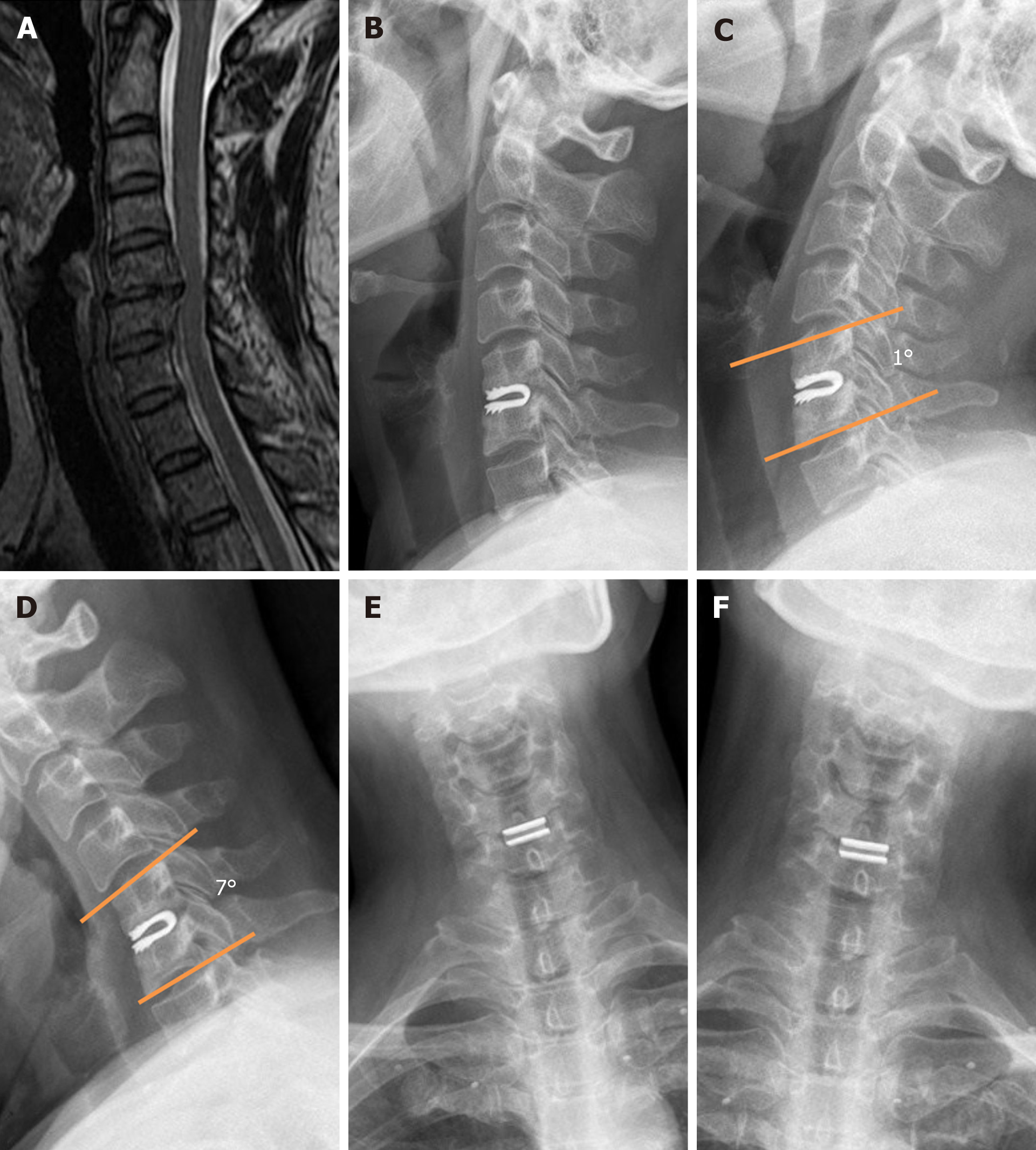Copyright
©The Author(s) 2021.
World J Clin Cases. Jun 6, 2021; 9(16): 3869-3879
Published online Jun 6, 2021. doi: 10.12998/wjcc.v9.i16.3869
Published online Jun 6, 2021. doi: 10.12998/wjcc.v9.i16.3869
Figure 1 Clinical outcomes during the 5-year follow-up.
A: Neck and arm visual analogue scale scores; B: Neck disability index scores; C: Japanese Orthopaedic Association scores. VAS: Visual analogue scale; NDI: Neck disability index; JOA: Japanese Orthopaedic Association.
Figure 2 A 50-year-old woman suffering from C5-6 degenerative disc disease.
A: Pre-operative magnetic resonance imaging demonstrated C5-6 disc herniation; B: At the 5-year follow-up, the neutral lateral radiograph showed a normal position of dynamic cervical implant; C and D: Dynamic radiographs showing that the functional spinal unit range of motion maintained; E and F: The lateral bending at the operated level was limited.
Figure 3 A 45-year-old woman receiving dynamic cervical implant arthroplasty due to C5-6 disc herniation.
A: Preoperative computed tomography showed that there were osteophytes at the posterior rims of the C5-6 intervertebral space (orange arrow); B: At 1-mo after operation, the osteophytes were excised thoroughly (orange arrow); C: At the 12-mo follow-up, grade II heterotopic ossification formation was observed at the operated segment (orange arrow); D: At the 60-mo follow-up, heterotopic ossification developed further to grade III (orange arrow).
- Citation: Zou L, Rong X, Liu XJ, Liu H. Clinical and radiological outcomes of dynamic cervical implant arthroplasty: A 5-year follow-up. World J Clin Cases 2021; 9(16): 3869-3879
- URL: https://www.wjgnet.com/2307-8960/full/v9/i16/3869.htm
- DOI: https://dx.doi.org/10.12998/wjcc.v9.i16.3869











